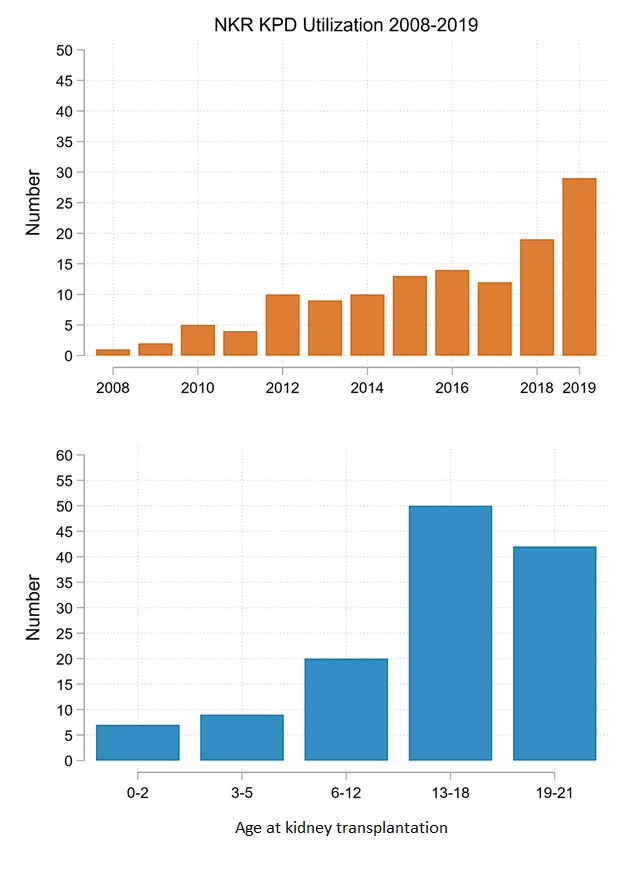Kidney Paired Exchange in Children in the United-states
1Transplant Research Center, Department of Surgery, Emory University, Atlanta, GA, 2Department of Epidemiology, University of North Carolina, Chapel Hill, NC, 3Department of Surgery, Medstar Georgetown Transplant Institute, Washington, DC, 4Department of Surgery, Johns Hopkins University, Baltimore, MD
Meeting: 2021 American Transplant Congress
Abstract number: 170
Keywords: Kidney transplantation, Living donor, Pediatric
Topic: Clinical Science » Kidney » Kidney Paired Exchange
Session Information
Session Name: Kidney Desensitization/KPD
Session Type: Rapid Fire Oral Abstract
Date: Sunday, June 6, 2021
Session Time: 6:00pm-7:00pm
 Presentation Time: 6:20pm-6:25pm
Presentation Time: 6:20pm-6:25pm
Location: Virtual
*Purpose: Kidney paired exchange (KPE) plays an increasing role in the landscape of adult living donor transplant (LDTx) in the US. LDTx is the treatment of choice in children with end-stage kidney disease. Despite the allocation of high quality transplants from deceased donors and relatively short waiting times in children, improving access to living donor transplant is of high importance. In this study, we describe the characteristics and outcomes of pediatric transplants performed through KPE.
*Methods: We studied 5,022 pediatric (recipient age≤21) living donor transplants (2/2008-12/2019), including 128 National Kidney Registry (NKR) transplants, using the Scientific Registry of Transplant Recipients (SRTR) linked with the NKR database. We compared death-censored graft failure (DCGF) and mortality between NKR recipients and three control groups (1) all non-NKR SRTR living donor recipients, (2) all non-NKR unrelated SRTR living donor recipients, and (3) all non-NKR SRTR paired exchange recipients.
*Results: There were 352 pediatric KPE transplants during the study period (36% participated in NKR). Among NKR pediatric recipients, 44% were female, 23% were African American (AA), 14% were Hispanic, and the median age was 16 (Figure 1). Compared to SRTR controls, NKR pediatric participants were more often AA (23% vs 9%, p<0.001), less likely to receive preemptive transplant (28% vs. 38% p=0.02), more often had a previous transplant (27% vs. 9%), and more often had a PRA>80 (23% vs. 4%, p<0.001). NKR participants experienced longer cold ischemia times (median 8 vs. 1 hour) but did not experience increased risk of delayed graft function (4% vs 3%, p=0.6), 5-year DCGF (5% vs. 0.5%, p=0.1), or 5-year mortality (1.7% vs. 1.9%, p=0.2).
*Conclusions: The use of KPE to improve access to LDTx in children increased over the last decade. This especially benefited children with traditionally lower access to LDTx such as AA and highly sensitized patients and demonstrated good patients and transplant outcomes similar to non-KPE LDTx.
To cite this abstract in AMA style:
Hogan J, Thomas AG, Verbesey J, Segev DL. Kidney Paired Exchange in Children in the United-states [abstract]. Am J Transplant. 2021; 21 (suppl 3). https://atcmeetingabstracts.com/abstract/kidney-paired-exchange-in-children-in-the-united-states/. Accessed December 10, 2025.« Back to 2021 American Transplant Congress

